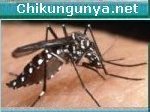Date: Fri 18 Jan 2008
Source: Division of Global Migration and Quarantine
National Center for Preparedness, Detection, and Control of
Infectious Diseases [edited]
< http://wwwn.cdc.gov/travel/contentYellowFeverBrazil.aspx>
Outbreak Notice: Yellow Fever Alert for Brazil Situation Information
-------------------------------------------------------------------
On 8 Jan 2008, the Brazilian Ministry of Health (MOH) announced a
yellow fever (YF) disease alert for tourists and diplomats residing
in Brazil, due to a number of suspected and confirmed human yellow
fever cases during December 2007 and January 2008. As of 16 Jan 2008,
10 confirmed cases of yellow fever have been reported, including 7 deaths.
The Brazilian MOH alert states that travelers to "areas of risk" for
yellow fever should be vaccinated 10 days before going to such areas.
In addition to areas previously identified in CDC's guidance to
travelers, the Brazilian MOH has identified 2 additional states with
yellow fever risk: the northern part of Espiritu Santo and the
western part of Santa Catarina.
Brazil currently requires yellow fever vaccination for persons
entering Brazil from countries listed as endemic for yellow fever
(see Brazil country-specific requirements). The new yellow fever
vaccination recommendation by Brazil for travelers is to protect the
travelers' health in response to this recent situation.
Recommendations for Travelers
----------------------------------
Travelers are strongly advised to follow the CDC yellow fever
vaccination recommendations for Brazil, with the addition of the
northern part of Espiritu Santo state and the western part of Santa
Catarina state. The Federal District of Brasilia is also an endemic
area. The Brazilian MOH has recommended vaccination of travelers >6
months of age. Because of increased risk of severe adverse events
following vaccination among infants <9 months of age and among
travelers >60 years of age, CDC recommends that parents of infants <9
months and travelers >60 years should discuss with their physicians
the risks and benefits of vaccination for travel to Brazil.
Since yellow fever is spread by the bite of an infected mosquito,
travelers are also reminded to:
* Use insect repellent on exposed skin surfaces when outdoors,
particularly during the day.
* Repellents containing 30 percent to 50 percent DEET
(N,N-diethyl-m-toluamide) are recommended for adults. Lower
concentrations of DEET offer shorter-term protection and require more
frequent reapplication.
* Repellents containing picaridin are available in the United States
in formulations of up to 15 percent concentration, which require
frequent reapplication. Repellents with higher concentrations of
picaridin may be available in some regions outside the United States.
* For additional information regarding the use of repellent on
infants and children, please see the "Insect and Other Arthropod
Protection" in Traveling Safely with Infants and Children and the
"Children" section of CDC's Frequently Asked Questions about Repellent Use.
* Wear long-sleeved shirts and long pants when outdoors. Clothing
may also be sprayed with repellent containing permethrin or another
EPA-registered repellent for greater protection. (Remember: do not
use permethrin on skin.)
Additional Information
-------------------------
For more information about yellow fever risk and yellow fever
vaccine, see the following sections of CDC Health Information for
International Travel 2008:
* Yellow fever (including precautions and contraindications to vaccine)
* Yellow Fever Vaccine Requirements and Information on Malaria Risk
and Prophylaxis, by Country.
--
Communicated by:
ProMED-mail
<promed@promedmail.org.
[ProMED wishes the Brazilian MOH success with their considerable
efforts in preventing an urban YF outbreak, and will be watching as
the situation develops. Meanwhile, travelers should heed the MOH and
CDC's advice about vaccination and avoidance of mosquito bites.
An interactive ProMED health map of Brazil can be accessed at
<http://healthmap.org/promed?v=-10.8,-53.1,4 >. - Mod.TY]













No comments:
Post a Comment